<< Previous | Displaying results 4151-4200 of 6769 for "" | Next >>
Zionist poster produced by a Jewish organization in Shanghai commemorating the anniversary of Vladimir Jabotinsky's death, 1944.
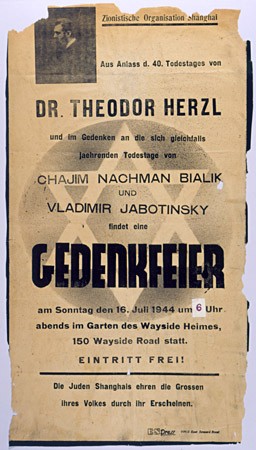
One of many signs displayed along the Shanghai ghetto's boundaries: "Stateless Refugees are Prohibited to Pass Here without Permission". This plaque was removed by a refugee at the end of the war. [From the USHMM special exhibition Flight and Rescue.]
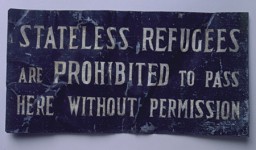
Pants worn by Marjan Glass as he dug anti-tank ditches for the defense of Warsaw, Poland, and then as he hastily fled the city ahead of the German advance on September 7, 1939. Glass, a lawyer, escaped with his wife and three-year-old son, and his wife's mother and brother. He left without taking the time to change from his soiled work clothing. [From the USHMM special exhibition Flight and Rescue.]

A seven-day gold traveling clock in a leather case, manufactured in France and originally made for a Russian nobleman. The panel in the leather case slides open to reveal the clock face. The clock was a Szepsenwol family heirloom. It was acquired by Chaya Szepsenwol's grandfather, who like her father, was a jeweler. The clock was among the family valuables that Rikla Szepsenwol was able to take out of Poland. [From the USHMM special exhibition Flight and Rescue.]
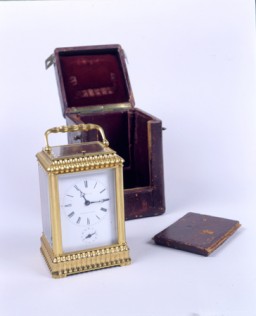
This poster from Munich, Germany, proclaims the April 1, 1933, boycott of Jewish-owned businesses and services offered by Jewish professionals. It calls on all Germans to honor the boycott, which began at 10 a.m. The poster was signed by the radical Nazi antisemite, Julius Streicher, official organizer of the boycott.
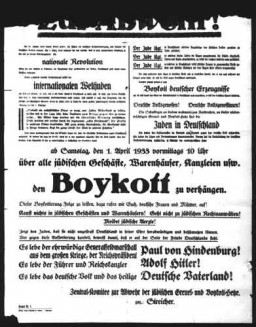
The program cover for "We Will Never Die" featured Arthur Szyk’s "Tears of Rage" artwork. The cover's original dimensions are: 12 1/16" x 9 1/16" x 3/16.
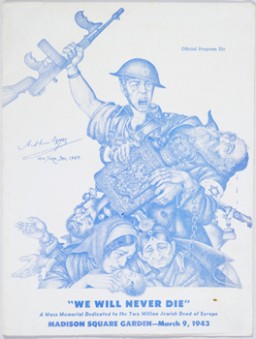
View of the countryside in Csobanka, Hungary, as the Hungarian Labor Service company 109/13 departs on the morning of April 20, 1942. [Photograph #57952]
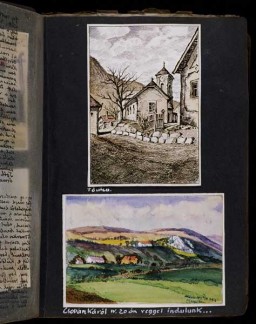
(Bottom) In a drawing dated April 18, 1942, Beifeld shows the school where the Hungarian Labor Service company 109/13 was quartered in Csobanka (Szentendre district), Hungary, before its departure for the Ukraine. A group of Hungarian soldiers [assigned to the labor service company] sits outside in the schoolyard. [Photograph #57947]

In a drawing dated April 14, 1942, Beifeld shows houses in Csobanka (Szentendre district), Hungary, where the Hungarian military officers assigned to the labor service company were quartered before their departure for the Ukraine. [Photograph #57949]

(Middle) In a take-off of travel posters advertising peaceful vacation spots, Beifeld draws a picture of a Hungarian military tent pitched next to a tree on which a bird is cheerfully chirping. Next to the tent the artist writes "Peaceful Surroundings" but above, a Soviet bomber releases a bomb aimed at the tent. [Photograph #58022]
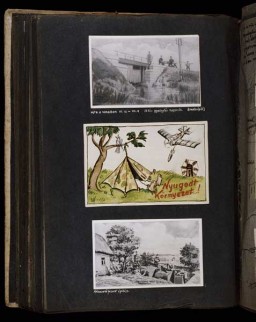
(Bottom) View of fortifications built at Kalimovka to defend the advancing troops of the 4th Infantry Division of the Hungarian 2nd Army. In the lower right corner of the drawing, men prepare the grave of Jewish Labor Serviceman Nandor Klein, the first fatality of the company. The Hungarian caption reads: The death of our first hero, Nandor Klein, his grave, June 5, 1942." Klein was killed by a stray Soviet bullet on his way back to base. [Photograph #58013]
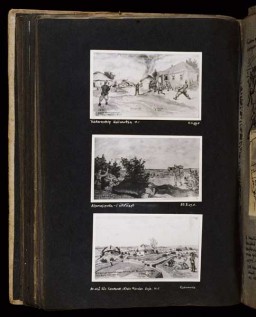
A page of drawings illustrating the contribution of Jewish Labor Servicemen to the war effort. At the top: "The different platoons work hard at the battle front and in the no man's land [between the armies]. They actively participate in the fighting. They carry ammunition to the Hungarian soldiers." In the middle: "They defuse land mines. They bury the dead, including those that had been left unburied from the winter campaign. They carry soldiers wounded on the front lines to safety." At the bottom: "For…
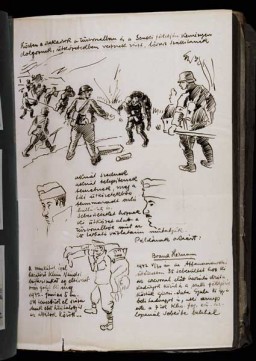
(Bottom) A drawing illustrating the patriotism of the Hungarian Jewish Labor Serviceman. Despite the fact that the Jew is denied the right to wear a military uniform and bear arms, Erno Steiner picks up the abandoned machine gun of First Lieutenant Hevessy of the 4th Infantry Division and starts firing at Soviet troops to fend them off. [Photograph #58015]
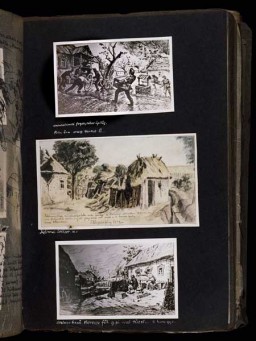
(top) "Watercolor entitled 'Partisan hotel and public house', Krassnolipia, Ukraine, until July 31, 1942"; (middle) "Drawing entitled 'The interrogation of partisans captured by our unit'"; (bottom) "Watercolor entitled 'My lodgings in Krassnolipia'" [Photograph #58040]

(Top) A map dated August 1942 showing the area of the late summer skirmishes between Hungarian and Soviet forces. It also shows the crucial bend in the Don River near the town of Uryv, where the fateful Soviet breakthrough occurred in January 1943. (Bottom) "Fairy tale nights along the Don River, August 1942." [Photograph #58058]
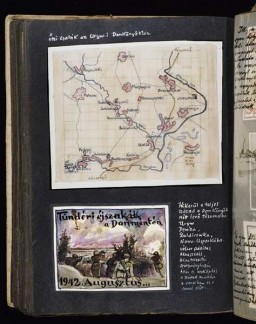
(Top and bottom) The image at the top shows Hungarian soldiers abandoning their trenches on the front lines as a Soviet tank overruns the barbed wire fortification separating the two armies. The drawing at the bottom captioned "Alarm," shows Hungarian soldiers running back and forth sounding the alarm of the Soviet counteroffensive. The drawings are dated Jan 11 and 13, 1943. [Photograph #58103]

Watercolor depicting Hungarian soldiers from a medical unit moving into a Russian village and setting up operations, April 10, 1943. [Photograph #58122]
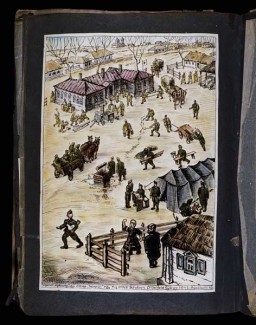
(top) "Watercolor entitled 'Sports weeks in Uryv, September 1942' in which a Russian tank attacks a Hungarian unit in Uryv."; (bottom) "Watercolor entitled 'Quiet Don: a detailed map of the Don River area' featuring images of dead soldiers, horses and spilled blood on a map of the Don River." [Photograph #58060]
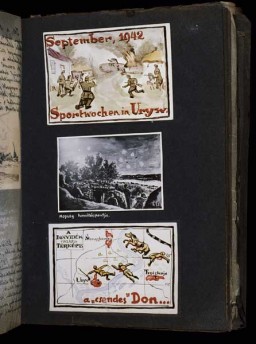
Drawing entitled 'Christmas Apotheosis! Don't let them do it' in which a member of a Hungarian medical unit stands behind a wounded Hungarian soldier as Russian tanks are destroying a Christmas tree. [Photograph #58087]
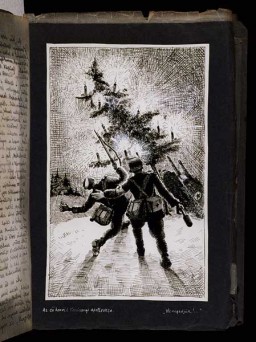
(Top) A map showing the progress of the advance of the Hungarian 2nd Army toward the Don River as of July 1942. [Photograph #58034]
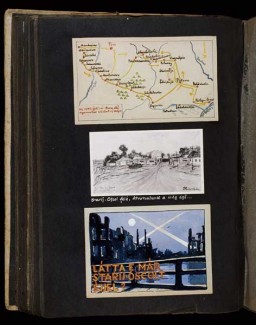
(Top) A drawing dated October 1942 depicting the events of August 28 when Beifeld was wounded near the front lines. His caption reads: "I get wounded and manage to get away from the dangerous bend in the [Don] river]." (Bottom left) Skull of a Soviet soldier with the caption 'Keep Smiling.' (Bottom right) Map entitled 'Dangerous Curve' depicting the bend in the Don River where the Soviet army was threatening to break through. [Photograph # 58061]
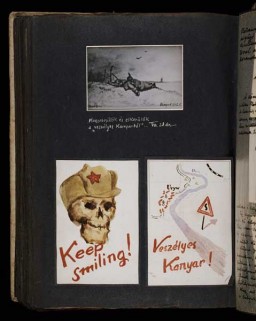
(Middle, left and bottom) In the drawing at the middle, left, Hungarian soldiers use an ax to cut up a dead horse in order to get meat to sustain themselves. The image at the bottom, titled "The Long Trip, February 1943," shows a Hungarian soldier walking along a road past a dead horse and an abandoned harrow that is half buried in the snow. [Photograph #58110]
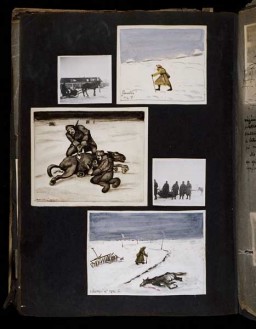
Collage entitled: "Mementos from the Russian campaign," which includes a watercolor of Stalin with the caption: 'Russia a meeting place for foreigners 1942-43' (top); a commuter train ticket issued to military personnel who carried the special SAS [Hurry, Immediate, Urgent] draft notice (middle, right); a pseudo travel brochure cover entitled 'Spend your summer vacation in merry Russia' (bottom, left); and the original design for the cover of the labor company's journal entitled 'Hungarian Royal 109/13…
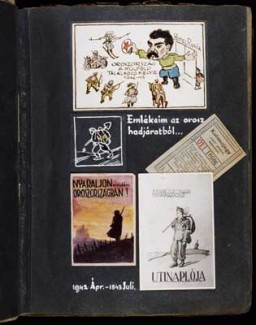
In the 1930s, famous Tennessee jazz musician Valaida Snow was known as “Little Louis” because her talent with a trumpet rivaled the legendary Louis Armstrong. She performed around the world, but it was a tour of Europe that would haunt her for the rest of her life. While in German-occupied Denmark, Snow is said to have been arrested and imprisoned in Copenhagen. It is still unclear why she was arrested or what was done to her while she was held, but after her release in a May 1942 prisoner exchange,…
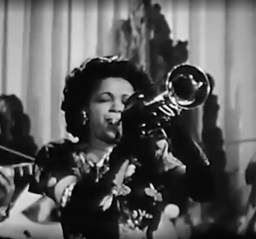
How was the Holocaust possible? The central role of Hitler and other Nazi Party leaders is indisputable. Less well understood is these perpetrators’ dependence on countless others. In countries across Europe, tens of thousands of ordinary people actively collaborated with German perpetrators of the Holocaust. Many more supported or tolerated the crimes. The special exhibition Some Were Neighbors: Collaboration & Complicity in the Holocaust was underwritten in part by grants from The David Berg…
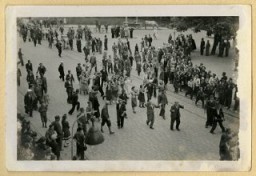

[This video is silent] Olympic athlete Jesse Owens won four medals at the 1936 Olympic Games in Berlin, Germany: 100-meter dash, gold200-meter dash, goldBroad (long) jump, gold4x100-meter relay, gold This footage shows Owens winning the 100-meter dash in a time of 10.3 seconds. Owens was one of the 18 African Americans (16 men and 2 women) who competed in the 1936 Olympic Games in Berlin. These athletes brought home 14 medals: 8 gold; 4 silver; and 2 bronze.
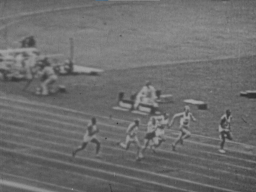

A lawyer, Belle Mayer worked for the General Counsel of the US Treasury, Foreign Funds Control Bureau. She was among the attorneys who prepared the indictment against the German I.G. Farben chemical company at the Nur...
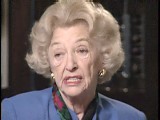


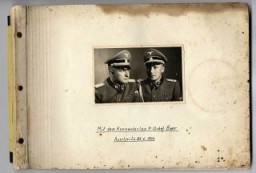
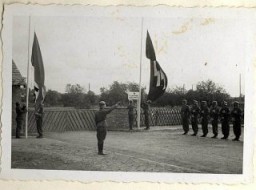
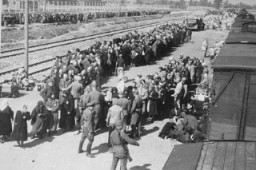

Descriptions of the death marches from survivors who experienced them and members of the...
SS guards brutally mistreated the prisoners during the death marches. They shot prisoners who...
Benjamin Meed, Holocaust survivor and leader of the survivor community, was a founder of the U...
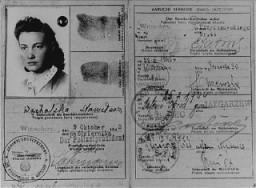
Launched on December 16, 1945, the Battle of the Bulge was the last major German military offensive in western Europe. By January 1945, the German military effort had failed.
On June 6, 1944, Allied troops landed on the beaches of Normandy, France. Commonly known as D-Day, the invasion was one of the most important Allied military operations during World War II.
Explore images related to the June 6, 1944, Allied invasion of Normandy—commonly known as “D-Day."
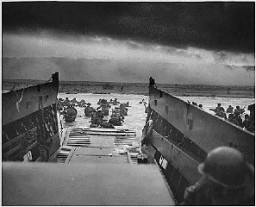

The Nazis began experimenting with poison gas for the purpose of mass murder in late 1939 with...
The Nazis established five killing centers in occupied Poland. Listen to survivors descri...
Carl Clauberg was a German research gynecologist. During the Holocaust, he conducted medical experiments on the female prisoners at Auschwitz. His mass sterilization experiments caused severe pain and sometimes death. Clauberg also experimented on w...
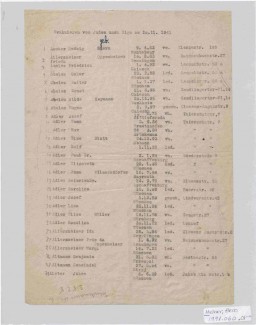
We would like to thank Crown Family Philanthropies, Abe and Ida Cooper Foundation, the Claims Conference, EVZ, and BMF for supporting the ongoing work to create content and resources for the Holocaust Encyclopedia. View the list of donor acknowledgement.